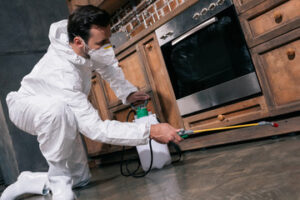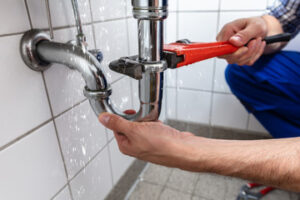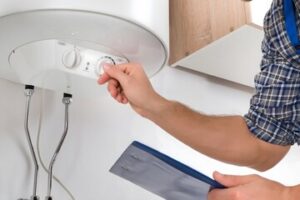Your home is one of the largest financial investments that you will make in your lifetime. In addition, it is where you will raise your family and rest your head at night.
Pest infestations impose hidden costs that can devalue your property and even threaten your health. From termites that erode foundations to rodents that chew through electrical wiring and insulation, pests can cause expensive damage and safety hazards. Visit our Website to learn more.

Termites
A termite infestation can have an impact far greater than simply eradicating the pests and repairing damage. In the long run, a home with a history of termite damage can be more difficult to sell, as it is likely to be perceived as a riskier investment. This can also have a ripple effect in the insurance landscape, affecting premiums and coverage limitations.
Additionally, the damage that a termite infestation can do to wooden furnishings and structures can be significant, and the fungus-like nature of these pests means they are difficult to get rid of. This can leave owners with a lot of money in repairs and a lot less to show for their homes.
Finally, termite damage can also deter prospective buyers from pursuing the property. The odors and signs of a termite infestation can have a strong negative psychological impact on potential buyers, and this is something that cannot always be overcome.
With the right pest control services, homeowners can protect their properties from pests and preserve their values. Taking a proactive stance not only saves the homeowner money on maintenance and repair costs but also shows potential buyers that the property is well-cared for, which can make it more attractive to a wide range of interested parties. Termite prevention is a key aspect of this, and the use of integrated pest management strategies can dramatically reduce the likelihood of an infestation. This approach is vital for protecting property value, even in the face of a changing real estate market.
Rodents
Rodents like mice and rats not only damage property, they also pose health risks to occupants. They spread disease and contaminate food by chewing and urinating in areas where they live. Mice and rats can also gnaw electrical wiring, which can lead to fires. Rodents also eat and destroy insulation in attics, a problem that is responsible for up to 25 percent of all house fires. Regular pest control measures can help keep rodents away from homes and businesses.
Infestations can cause serious damage to a property and significantly reduce its value. In the real estate market, buyers are often wary of a property that appears dirty or unhealthy. The cost of eradicating pests and the negative perception that a pest-infested property gives off can make it difficult to sell or rent the property, resulting in a loss of money for the owner.
Pest infestations increase repair costs and insurance premiums. In addition, the cost of medical expenses resulting from pest-borne diseases and allergies can add up quickly. Keeping pest populations under control saves property owners from these costs, contributing to higher property values.
Regular pest inspections and environmental modifications are crucial for upholding a property’s value. Many pests establish large infestations in surprisingly short periods. A single sighting of a pest on the premises can signal that more are hiding nearby. Sealing cracks, managing vegetation, ensuring proper waste disposal, and cleaning storage spaces can prevent pests from finding comfortable homes on commercial and residential properties.
A thorough pest control plan protects property values and increases habitability for occupants. In addition, the cost of pest control services is far lower than the potential losses associated with pest infestations.
Cockroaches
Cockroaches may seem like a nuisance, but they are also capable of damaging your property’s value. This is due to their ability to spread disease, damage surfaces, and create unpleasant living conditions. They can also increase repair costs and deter potential buyers or tenants, causing your property’s value to decline.
With their origins in tropical environments, cockroaches seek out areas of high moisture and temperature. This includes basements, bathrooms, greenhouses, and kitchens. Because of this, they are especially likely to infest buildings occupied by humans. They also enjoy hanging out in sewers, boiler rooms, steam tunnels, and the space behind refrigerators and stoves.
They are scavengers that feed on anything, including food scraps, paper, fabric, and dead insects. The spines on their legs pick up germs as they crawl over decaying materials, which can then be transferred to food and household surfaces. They are known to carry 33 types of bacteria (including E coli and Salmonella), six kinds of parasitic worms, and many other diseases. They can cause respiratory infections, diarrhea, and even death if ingested.
Besides the health hazards, cockroaches can damage your property by contaminating food and causing staining and odors. They gnaw on paper, cardboard, and fabrics, and leave behind fecal matter and secretions that stain surfaces over time. Additionally, they emit a foul-smelling pheromone that can linger in areas where infestations occur.
The pests mentioned above are just a few of the species that can impact your property’s value. However, other pests like termites and rodents can also weaken the structure of your home or business, causing a loss in overall value. This is because prospective buyers and tenants are likely to be put off by the damage and potential health risks.
Ants
Although ants are considered pests by most people, they play an important role in ecosystems. Their nests underground aerate the soil, making it more nutrient-rich and improving its ability to support plant growth. Ants also disperse seeds and pollinate flowers, contributing to the biodiversity of our planet.
In homes, ants cause problems because they carry bacteria and other pathogens that can contaminate food supplies. They may also gnaw through wires and insulation, posing serious safety risks for residents. In addition, if ants are found in kitchens, they can ruin food items by crawling on them.
When an infestation is not treated quickly, the costs associated with extermination and repairs can add up significantly. Furthermore, a property that has a history of pest infestation can be stigmatized by potential buyers, lowering its market value.
Ant infestations can be difficult to manage because there are many different ant species, each with its preferred habitats and behaviors. Some, like carpenter ants, damage wood by burrowing through it, while others, such as odorous house ants, search for food inside homes.
To reduce the number of ants in and around homes, regular inspections and preventive measures are necessary. This can include sealing entry points, addressing moisture problems, and removing overhanging vegetation that provides shelter for ants. Additionally, reducing the amount of crumbs and other food sources in and around the home can help deter ant foraging. Various commercial baits are available to attract ants and kill them, but some of these chemicals can be toxic if ingested by children or pets. The best approach is a natural powder-like product such as diatomaceous earth, which works by absorbing the ants. outer layer causing them to dehydrate.
Bed Bugs
Bed bugs are a serious pest issue that is difficult to treat effectively. Although they often infest apartment buildings, they can occur in individual homes and hotels as well. Infestations are spread as people move, and they can be carried on luggage, clothing, personal items, or even stuffed animals. The recent resurgence of these insects has been attributed in part to international travel. Bed bug infestations can also be introduced into a building or home by purchasing infested furniture at a second-hand store.
The presence of these insects deters prospective buyers and renters, significantly impacting a property’s value. Infestations that are discovered during inspections can lead to lower offers and can delay or even derail a sale or lease agreement. Regular pest control services reassure prospective buyers and renters that the property is well-maintained and free of significant issues, improving its value.
In multi-unit housing, it is particularly important to have routine, thorough bed bug inspections. Infestations in apartments often go undetected and unreported by tenants, which can lead to a chain reaction that leads to the spreading of pests throughout an entire building. This problem is further complicated by the fact that bed bugs are excellent hitchhikers and can easily move between units. To limit the spread of these pests, it is critical to have regularly scheduled inspections (quarterly, semi-annual, etc.) of all units by a qualified pest control professional.
It is advisable to thoroughly clean and vacuum all rooms, paying special attention to those that contain beds or seating areas. Bedding should be laundered using hot water and high-temperature dryer settings. Stuffed animals, backpacks, and shoes should be washed as well. A few dish-shaped pitfall traps placed near beds and seating areas can help to reveal the presence of these pests early in the infestation process.


